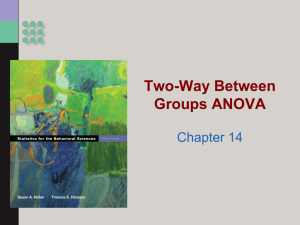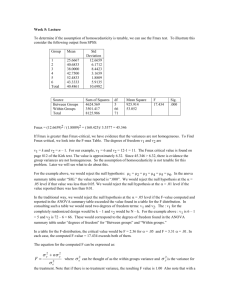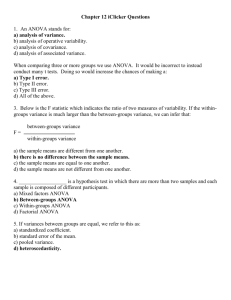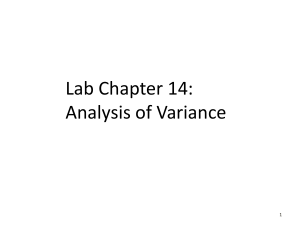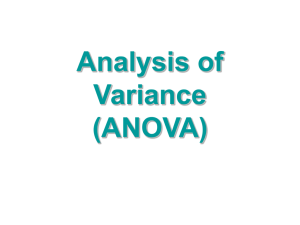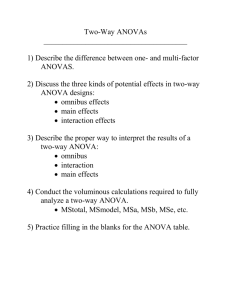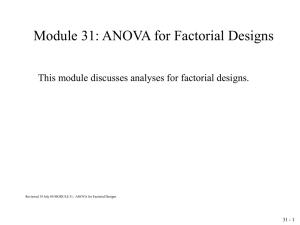Chapter 12 iClicker Questions
advertisement
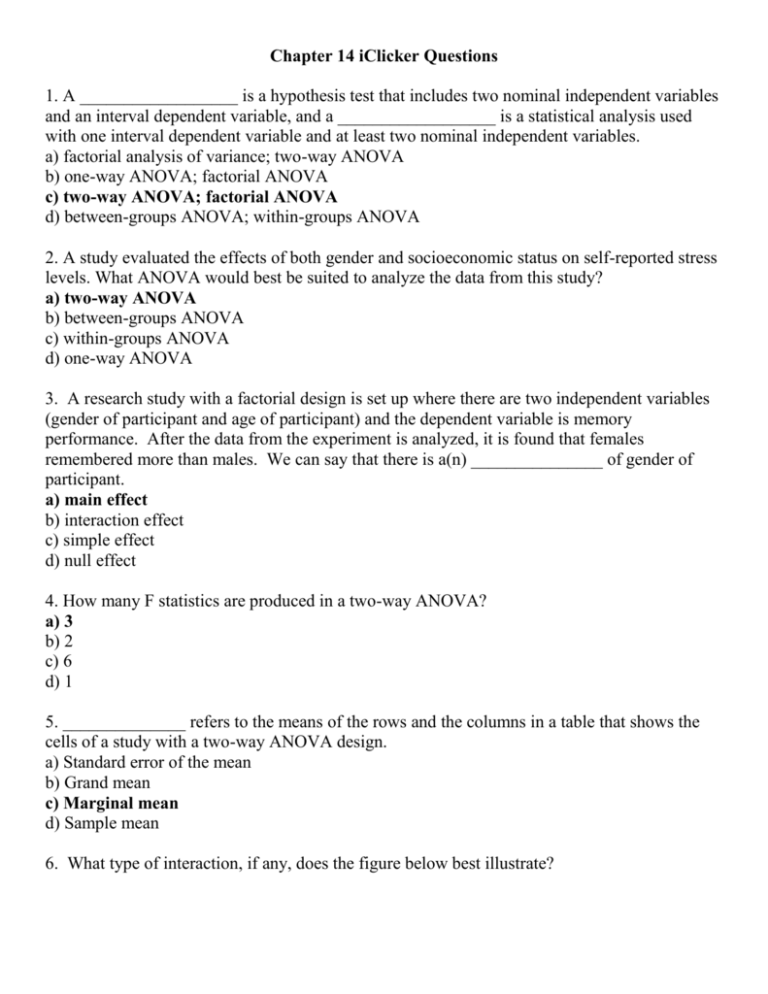
Chapter 14 iClicker Questions 1. A __________________ is a hypothesis test that includes two nominal independent variables and an interval dependent variable, and a __________________ is a statistical analysis used with one interval dependent variable and at least two nominal independent variables. a) factorial analysis of variance; two-way ANOVA b) one-way ANOVA; factorial ANOVA c) two-way ANOVA; factorial ANOVA d) between-groups ANOVA; within-groups ANOVA 2. A study evaluated the effects of both gender and socioeconomic status on self-reported stress levels. What ANOVA would best be suited to analyze the data from this study? a) two-way ANOVA b) between-groups ANOVA c) within-groups ANOVA d) one-way ANOVA 3. A research study with a factorial design is set up where there are two independent variables (gender of participant and age of participant) and the dependent variable is memory performance. After the data from the experiment is analyzed, it is found that females remembered more than males. We can say that there is a(n) _______________ of gender of participant. a) main effect b) interaction effect c) simple effect d) null effect 4. How many F statistics are produced in a two-way ANOVA? a) 3 b) 2 c) 6 d) 1 5. ______________ refers to the means of the rows and the columns in a table that shows the cells of a study with a two-way ANOVA design. a) Standard error of the mean b) Grand mean c) Marginal mean d) Sample mean 6. What type of interaction, if any, does the figure below best illustrate? a) a quantitative interaction b) a parallel interaction c) a qualitative interaction d) There is no interaction in the figure. 7. When you get your output from a two-way, which F statistic, if it is significant, should you first interpret? a) main effects b) placebo effects c) null hypothesis d) interaction effects 8. If you construct a graph of the means from a research study with a two-way factorial design and you see that the two lines in your graph intersect, this means: a) there is an interaction effect. b) there is not an interaction effect. c) you have two main effects. d) you have no main effects. 9. What type of interaction, if any, does the figure below best illustrate? a) a quantitative interaction b) a parallel interaction c) a qualitative interaction d) There is no interaction in the figure. 10. Which of the following is the correct formula for degrees of freedom for the interaction effect of a between-subjects factorial design? a) Df interaction = (df rows) + (df columns) b) Df interaction = (df rows) (df columns) c) Df interaction = N rows - 1 d) Df interaction = N columns - 1 11. For a two way ANOVA, which statistic do we use to calculate effect size? a) R2 b) Df c) F d) SS 12. A form of ANOVA in which there is more than one dependent variable is called: a) a mixed-design ANOVA. b) a MANOVA. b) an ANCOVA. c) a multi-varied ANOVA. 13. A scale variable that we suspect associates with the independent variable of interest is called: a) a factor. b) a dependent variable. c) a covariate. d) a marginal.

